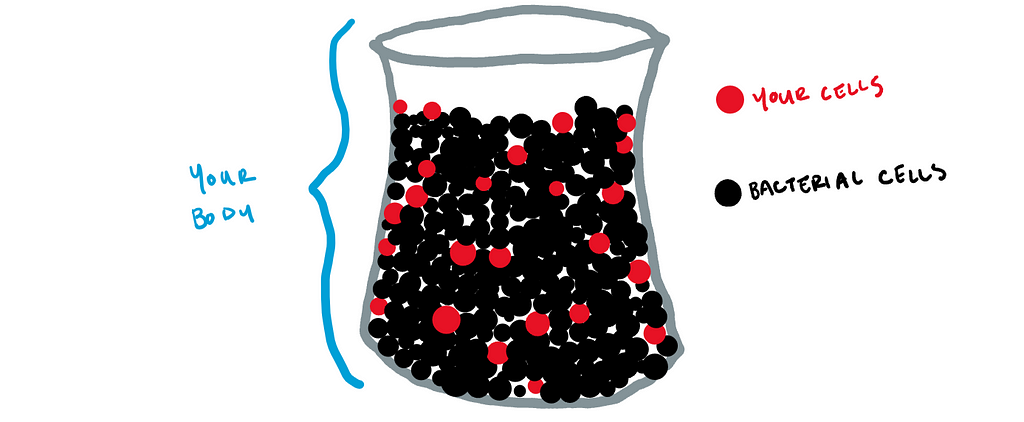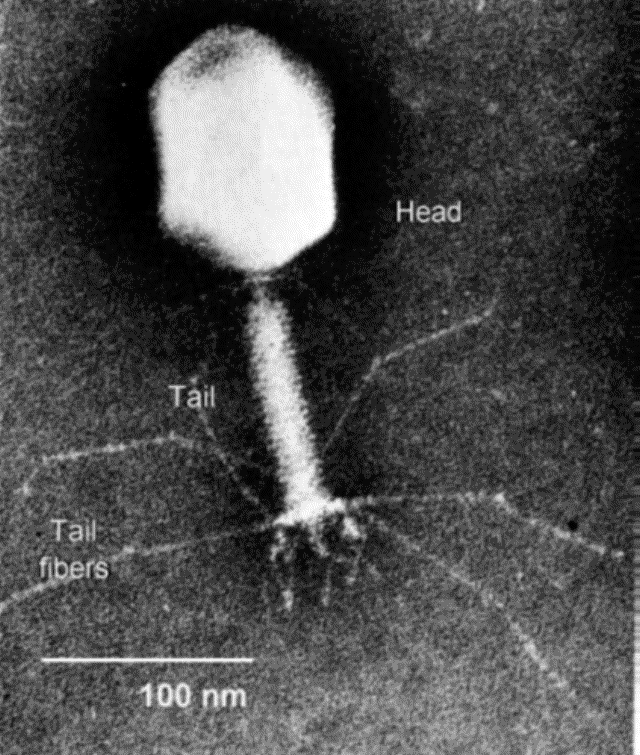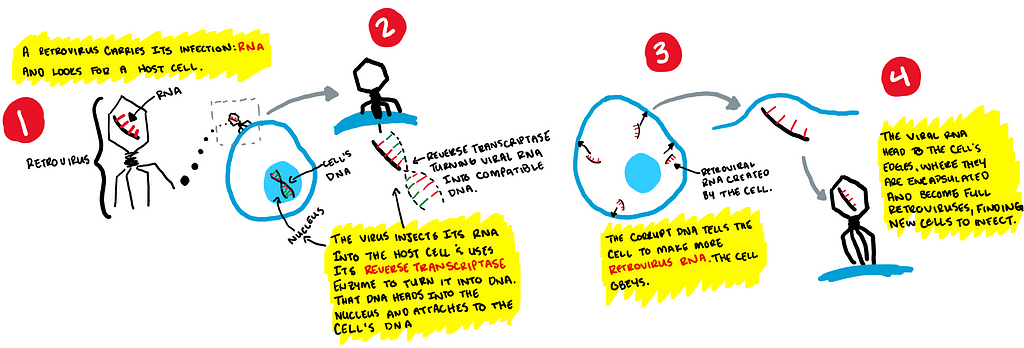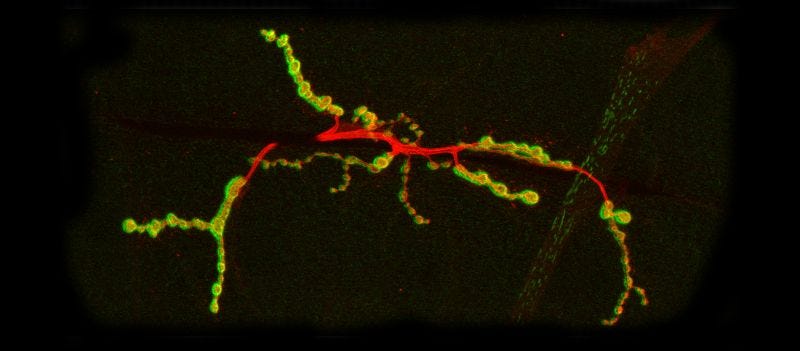Latest news about Bitcoin and all cryptocurrencies. Your daily crypto news habit.
 Intelligence Born From a Virus
Intelligence Born From a Virus
Chapter one began the series by looking at how scientists measure and compare intelligence. By examining through that lens, we are better able to understand just how intelligence works — at least, our understanding of how it works. Turns out, it’s not about brain size nor a ratio of brain:mass, but about the neurons and how the neurons interact. If you haven’t read part one and are interested in understanding how our brains work, you can read about it here:
The Origins & Future of Intelligence: Chapter 1
Now that we have a better understanding of how it works, the question remains about why it works like that; i.e., what, if anything, happened to humans that transformed our brains into a powerhouse, giving us the ability to not only survive but dominate our planet? Recently, a surprising new theory emerged regarding how organisms inherited such a power: viruses gave it to us. Chapter 2 takes a look at our viral ancestry, and how it gave rise to intelligence.
You Are Barely You
We like to imagine that life is simple. A single egg-and-sperm combination carries all of the genetic materials that create us. It is the foundation of who we are, whether we’re a single cell, a newborn baby or a fully grown adult.
But reality isn’t as simple. For example, you might know that bacteria inhabit our gut and help us with the process of digestion. Funny side effect: those bacteria affect your physical health (obesity, diabetes, etc.) as well as your mental health (autism, anxiety, depression). Also, those bacteria aren’t the only ones that inhabit us; in fact, microorganisms outnumber our own body’s cells 10 to 1.
 Your have 9 bacterial cells for every 1 cell you have in your body
Your have 9 bacterial cells for every 1 cell you have in your body
Think about it this way: imagine all of the cells in your body (yours and your microorganism’s) were transformed into congruently sized gumballs — whatever flavor you want, it doesn’t matter. Those gumballs are put into a bucket. Then you could reach in and try to grab a gumball that was your cell, not a microorganism. Statistically, after reaching in ten times, you only pull out one of your own cellular gumballs.
 Scanning Electron Microscope Image of a virus
Scanning Electron Microscope Image of a virus
With that perspective in mind, it shouldn’t be so hard to believe that not much of your DNA is yours, either. A huge chunk of your DNA comes from viruses. Approximately 5% to 8% of the human genome comes from ancient viruses. Viral-based genetic code affects the bodies in ways you might’ve never thought about. For example, viral-based genetic code regulates hormones in a female’s body that control birth timing. And yes, you’ve probably guessed where I’m headed — viral-based genetic code has recently been linked as a catalyst to intelligence. Specifically, it’s the ancestors of retroviruses, retrotransposons, that are the ones that found their way into an evolutionary symbiosis with our brains (as well as other aspects of us).
Retrovirus Ancestor Fossilized in our DNA
Scientists have a term for the genetic code of an organism that can be traced back to retroviral origin: endogenous retroviruses (ERVs). When talking specifically about humans, sometimes it’s referred to as human endogenous retroviruses (HERVs).
 Viruses hijack cells like pirates hijack ships
Viruses hijack cells like pirates hijack ships
Why specifically retroviruses and not other types of viruses? Because retroviruses do things a bit differently. A normal virus finds a host cell, injects itself inside and hijacks the cell’s controls, like how pirates might jump aboard a ship to take it for themselves. But unlike a pirate, a virus uses those cell’s controls to make the cell create clones of the virus. Those clones then escape the cell (frequently by brute force, killing the infected cell) and find other cells to infect.
 The circle of life for the retrovirus.
The circle of life for the retrovirus.
Retroviruses do things a little differently, and they do it with the help of an enzyme (think of it as Red Bull for cellular-level actions; enzymes are used to start certain actions within the cell) they have called Reverse Transcriptase. Reverse transcriptase is like watching a transcriptase video on rewind. Transcriptase is also an enzyme; it uses DNA to produce RNA. A retrovirus, though, has RNA inside of it, so it uses reverse transcriptase to turn its RNA into DNA. That DNA then finds its way into the nucleus, where it can attach itself to the cell’s existing DNA.
If that explanation was a bit dense, all you need to know is that retroviruses can turn their code into DNA, which can then be added to the a cell’s existing DNA.
This viral-injected DNA adds an extra line of code to the cell’s DNA, telling the cell to make more of the virus. The cell does it without second thought because it’s now brainwashed. The newly cloned viruses are formed along the edge of the cell at the membrane, and leave after the cell opens the door and waves goodbye to them with a brainwashed smile on its face. While this seems isolated to an individual human, imagine that the retrovirus’s genetics found its way into an egg or sperm cell. At that point, the literal building blocks of the next life will have retroviral DNA included.
Noah’s Arc Arc gene under a scanning electron microscope ( J. Ashley et al., Cell 172, 1–13 Jan. 11, 2018. 2017 Elsevier Inc.)
Arc gene under a scanning electron microscope ( J. Ashley et al., Cell 172, 1–13 Jan. 11, 2018. 2017 Elsevier Inc.)
With all of that background information out of the way, we are finally getting to the most relevant part: piecing together ERVs and the brain. It starts at the synapse, which is the part of the nerve cell that transmits electrical or chemical signals to other nerve cells. After the synapse sends out a signal to another nerve, something magical happens. A gene called Arc activates and begins creating RNA. That RNA carries a message, which is transmitted to the other nerves. The RNA is encapsulated and sent out of the cell. If you recall, this is what a retrovirus does.
Effectively, Arc ‘infects’ other neurons with the raw materials of memory.
That’s because researchers believe that Arc is an ERV. At this point, we don’t know exactly what the message is that’s encoded in RNA and delivered, but we do know that Arc plays a very important role in the brain, especially with regards to storing information — over time, it tells the nerves how to organize themselves to store more information efficiently. If the Arc gene is not properly sending instructions, synapses of the nerves die out; the gene has been implicated in neurological disorders. When researchers removed the Arc gene from animals, those animals could still store short-term memories, but could no longer store long-term ones. In other words, Arc is kind of a big deal.
While we have been looking at intelligence from the lens of human intelligence, I want to point out that the Arc gene is not unique to humans; it is found in many organisms, and it behaves in a similar way. That being said, the researchers responsible for making this discovery independently of each other (Budnik’s group looked at Arc in flies, while Shepherd’s looked at Arc in rodents) think that the Arc genes “seem to have evolved from two distinct retroviruses that entered the species’ genomes at different times.”
It’s very different that what we’ve been taught in science class, but new discoveries such as the Arc gene’s origins require us to be open-minded and change how we understand the core of who we are, and how we became intelligent. So far, research has shown that around 8% of human DNA comes from retroviruses, but that might be just the tip of the iceberg. Regardless of what other strange origin stories lie beneath, we do know that Arc’s existence inside our brains is something we can be grateful for to our viral ancestors.
How information is transmitted to different neurons in the brain is a key piece to understanding intelligence, but it’s not the only one. One big factor that sets human brains apart from other organisms’ brains is the density of neurons in our cerebral cortex, as discussed in Chapter 1. Chapter 3 will examine this density anomaly and tackle how it came about.
Got Questions? Wanna Chat?
Ask Me Anything on Worthyt or Follow Me on Twitter.
The Origins and Future of Intelligence: Chapter 2 was originally published in HackerNoon.com on Medium, where people are continuing the conversation by highlighting and responding to this story.
Disclaimer
The views and opinions expressed in this article are solely those of the authors and do not reflect the views of Bitcoin Insider. Every investment and trading move involves risk - this is especially true for cryptocurrencies given their volatility. We strongly advise our readers to conduct their own research when making a decision.